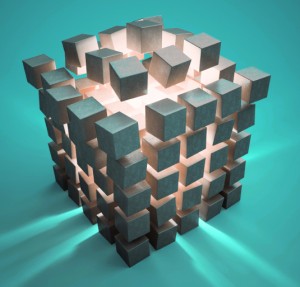3D Printing: Are We There Yet?
 I’ve been reading about 3D printing in the news and on blogs over the past few years, and there are some industrial designers and architects who are doing some amazing things with the technology. Certainly for professionals like these, the ability to do rapid prototyping is incredibly helpful. The more I read, however, the more I am sure that this technology needs to mature a lot more before I jump on the home-use bandwagon.
I’ve been reading about 3D printing in the news and on blogs over the past few years, and there are some industrial designers and architects who are doing some amazing things with the technology. Certainly for professionals like these, the ability to do rapid prototyping is incredibly helpful. The more I read, however, the more I am sure that this technology needs to mature a lot more before I jump on the home-use bandwagon.
Don’t get me wrong: the idea of 3D printing is absolutely thrilling to me. The same part of me that is desperate for a flying car is excited to see this happen. “We’re in the midst of another Industrial Revolution, and it’s all thanks to 3D printing,” enthuses Mashable in this inspiring article. Because I am all over the idea of the democratization of design, I get excited when I read things like this.
The promise of affordable prosthetic limbs and other medical applications are especially thrilling. Even just recalling of all the times I’ve thought to myself, “if only I had a way to make a thing that does x” keeps me going back to the Makerbot site again and again.
I am not ready to shell out for one yet, however. Here’s why.
1. The Circle Is Broken
My overwhelming feeling is that all we’re doing with home 3D printing is making more landfill – we just have a more expensive way of doing it.
Anything you can make with most 3D printers is non-recyclable. You need special kinds of plastic to work in a 3D printer, and neither it nor the printed end product can be recycled in a typical city recycling program, or composted. The good news is that at least now some 3D printers use PLA, a much more eco-friendly plastic, even if it isn’t perfect. While PLA is plant-sourced and biodegradable, it doesn’t break down in landfills, and it’s made out of food plants that could be used to feed people.
Once we’re able to complete the circle, and we’re able to put things we’ve made back into the 3D printer and have it turned into a whole new thing – then we’ll really have something. Luckily we’re closer to this than ever with some printers, like the Filabot reclaimer, which can eat everyday plastic. That’s not true of all of them yet though.
2. All You Can Make Is Plastic (So Far)
A comic book called “Transmetropolitan” by Warren Ellis depicted a near-future world in which a machine called a ‘maker’ could create anything you wanted instantly: food, a new linen suit, or computer glasses. Similarly, the Star Trek replicator is often referenced in enthusiastic 3D printer advertising copy.
Articles like this one, however, point out the huge gap between people’s expectations and the reality of 3D printing. In particular the author (who works in 3D printing) points out that the products may look like they’re made from multiple materials, but it’s really just all the same plastic.
That being said, “bioprinting” is the new but very real field of printing human tissue, which promises to end waiting lists for transplant organs someday. While these are specialized machines that you or I could not afford, it’s good to know that this technology is capable of printing more than plastic. It looks like metals and ceramics are also on the horizon. Objects made of sugar and salt have been created, and some food printing is already being tried.
3. 3D Printing Encourages Compulsive Consumerism
Are the little plastic bits and pieces you get out of a home 3D printer much different from the stuff you get from the local store? Why create a Rubik’s cube yourself when you can just buy one for less and start playing?
Part of the problem with our culture is that we’re never happy with the things we have. Last week’s delight is tomorrow’s junk. Because everything is so cheaply made, quality of design (i.e. fitness for use) and longevity are not given as much priority.
It may sound like the pinnacle of hypocrisy for me to say this, as most of my blog posts are about the joys and challenges of learning to make things yourself according to your own designs. But the kinds of things we can make using 3D printing technology seems by and large useless to me. Sure, you can make your own tchotchkes and Christmas tree ornaments, but why not purchase something hand-made by an artist if that’s what you want? Or better yet take the time to learn the skills of glass-blowing or pottery or carving?
Maybe Tomorrow…
I still have hope that 3D printing will turn out to be the next societal game changer. I have seen some reasons to use 3D printing that seem great to me, like this gardener who created his own custom seedling supports, for example. I am definitely looking forward to the time when 3D printing starts living up to the hype. Maybe the real problem is that I have unrealistic expectations. But until I can find real uses for the things that I could make, I’m going to stay in the back seat and keep asking, “are we there yet?”
What do you think? Am I way off base here? I’d love it if you share your thoughts in the comments below.
By Jennifer Priest


Thanks for you comment, Luc - I am very keen to see how the technology develops and I think your…